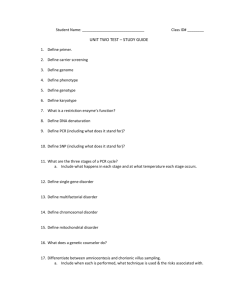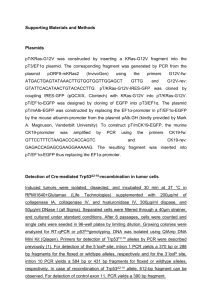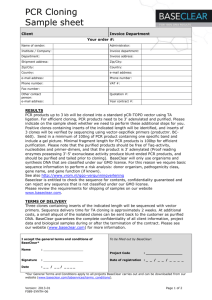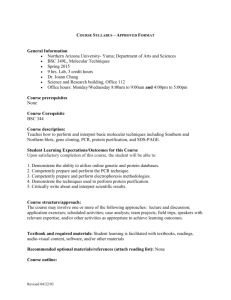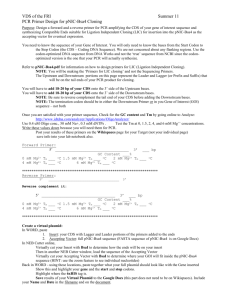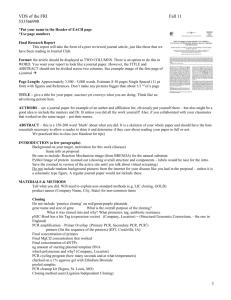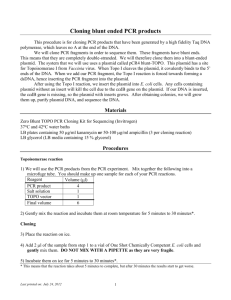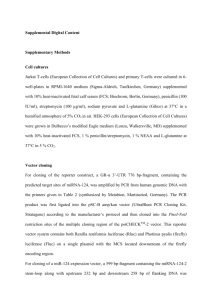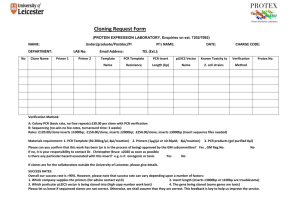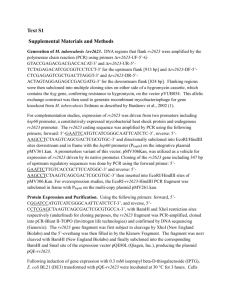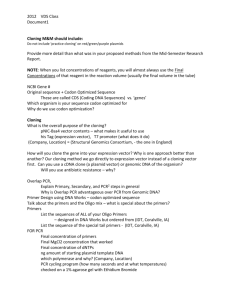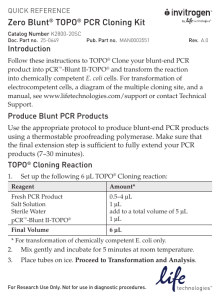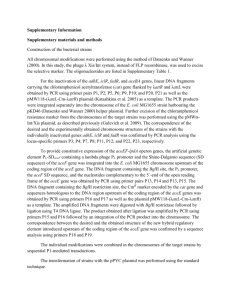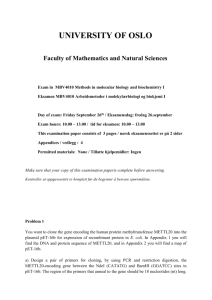Supporting Methods Plasmid Constructs Linked FP-FP and FP
advertisement
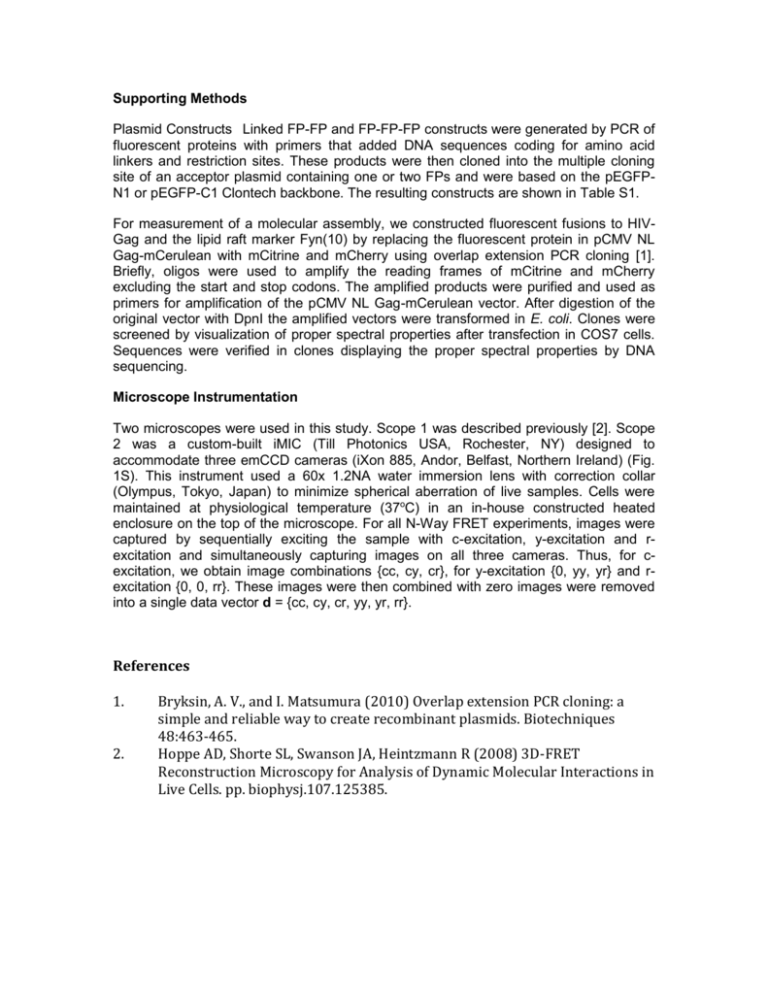
Supporting Methods
Plasmid Constructs
Linked FP-FP and FP-FP-FP constructs were generated by PCR of
fluorescent proteins with primers that added DNA sequences coding for amino acid
linkers and restriction sites. These products were then cloned into the multiple cloning
site of an acceptor plasmid containing one or two FPs and were based on the pEGFPN1 or pEGFP-C1 Clontech backbone. The resulting constructs are shown in Table S1.
For measurement of a molecular assembly, we constructed fluorescent fusions to HIVGag and the lipid raft marker Fyn(10) by replacing the fluorescent protein in pCMV NL
Gag-mCerulean with mCitrine and mCherry using overlap extension PCR cloning [1].
Briefly, oligos were used to amplify the reading frames of mCitrine and mCherry
excluding the start and stop codons. The amplified products were purified and used as
primers for amplification of the pCMV NL Gag-mCerulean vector. After digestion of the
original vector with DpnI the amplified vectors were transformed in E. coli. Clones were
screened by visualization of proper spectral properties after transfection in COS7 cells.
Sequences were verified in clones displaying the proper spectral properties by DNA
sequencing.
Microscope Instrumentation
Two microscopes were used in this study. Scope 1 was described previously [2]. Scope
2 was a custom-built iMIC (Till Photonics USA, Rochester, NY) designed to
accommodate three emCCD cameras (iXon 885, Andor, Belfast, Northern Ireland) (Fig.
1S). This instrument used a 60x 1.2NA water immersion lens with correction collar
(Olympus, Tokyo, Japan) to minimize spherical aberration of live samples. Cells were
maintained at physiological temperature (37oC) in an in-house constructed heated
enclosure on the top of the microscope. For all N-Way FRET experiments, images were
captured by sequentially exciting the sample with c-excitation, y-excitation and rexcitation and simultaneously capturing images on all three cameras. Thus, for cexcitation, we obtain image combinations {cc, cy, cr}, for y-excitation {0, yy, yr} and rexcitation {0, 0, rr}. These images were then combined with zero images were removed
into a single data vector d = {cc, cy, cr, yy, yr, rr}.
References
1.
2.
Bryksin, A. V., and I. Matsumura (2010) Overlap extension PCR cloning: a
simple and reliable way to create recombinant plasmids. Biotechniques
48:463-465.
Hoppe AD, Shorte SL, Swanson JA, Heintzmann R (2008) 3D-FRET
Reconstruction Microscopy for Analysis of Dynamic Molecular Interactions in
Live Cells. pp. biophysj.107.125385.

